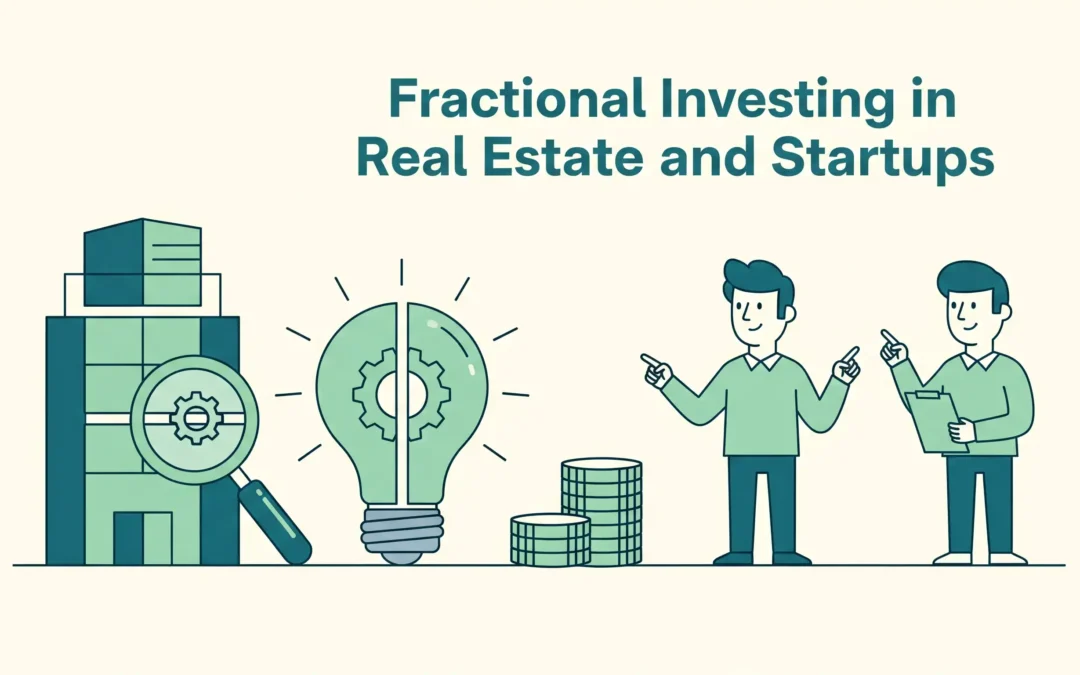People like investing to fulfil the main goal of growing their capital and building wealth in the long run. Real estate is one of the most trusted ways of investing. But not everyone can afford to buy a whole building, right? This is where fractional investing comes in. It allows the individual to own the property in proportion to the capital invested.
This article will help you know more about fractional investing, along with the pros and cons that come with it. Make an informed decision after thoroughly knowing your investment options.
What is Fractional Investing?
In real estate, fractional investing is when several investors pool their funds to buy a property, with each investor holding a “fraction” or share. For instance, rather than purchasing a whole commercial building valued at Rs. 5 crore, you may only own 2% of it, with minimum investment amounts typically ranging from as low as Rs. 10,000 to Rs. 1 lakh in India, though some platforms may require higher minimums.
Platforms that create a legal structure, usually a Special Purpose Vehicle, or SPV, to hold the property, are used to manage this model. In proportion to their ownership stake, investors receive a portion of both capital growth and rental income.
Key Features:
- Reduced Entry Barrier: As little as Rs. 10,000 can be used to begin investing.
- Shared Ownership: Profits are divided proportionately among investors who co-own the asset.
- Expert Administration: Platforms oversee the property, renters, legal matters, and documentation.
- Consistent Income: Get rental payments on a monthly or quarterly basis.
- Diversification: Distribute investments among various asset classes and geographical areas.
- Asset Transparency: Platforms usually provide projected returns, property records, and periodic performance reports, but the depth and frequency of disclosures can vary between providers.
Key Opportunities in Fractional Ownership
Let us look at the opportunities it has to offer:
1. Access to High-Value Assets at an Affordable Price
- Invest a small amount of money between Rs. 10,000 and Rs. 1,00,000 in startups or high-end real estate.
- Removes the requirement for crores in order to access institutional-grade investment opportunities.
- Perfect for people with little savings, young professionals, and first-time investors.
2. Diversification of Asset Classes
- Some platforms allow diversification within real estate, while others may offer investments in startups or other alternative assets separately. Direct access to all asset types depends on the specific platform.
- Lessens reliance on conventional asset classes such as mutual funds and stocks.
- Balances income-producing assets with high-growth ones to help reduce risk.
3. Capital appreciation and passive income
- Get rental income from fractional real estate holdings on a monthly or quarterly basis.
- Enjoy the long-term growth of your startup capital or real estate.
- Helps build wealth by serving as a retirement supplement or second source of income.
4. Transparency and Professional Management
- Tenants, compliance, documentation, and legal structures (like SPVs) are all managed by platforms.
- Audited records, rental statements, and performance reports are given to investors.
- keeps your investment visible while lowering complexity and effort.
5. Democratised Wealth Generation for Individual Investors
- Opens up previously exclusive opportunities (like commercial real estate and startup funding) to the general public.
- Encourages younger, tech-savvy investors to participate in the financial system more broadly.
- Encourages more intelligent investing and financial inclusion in India’s expanding economy.
Pitfalls of Fractional Ownership
There are some cons of fractional ownership in real estate, which are listed below:
1. Restricted Options for Exit and Liquidity
- Fractional assets are difficult to trade on open markets, in contrast to stocks or mutual funds.
- It might be necessary to wait for asset liquidation or look for a buyer on secondary platforms in order to exit an investment.
- Access to your capital may be delayed by lock-in periods and resale restrictions.
2. Risks of Market and Asset Volatility
- Regional oversupply, interest rate fluctuations, and economic downturns can all affect real estate values.
- Startup investments are even more volatile due to scalability concerns and unpredictable revenues.
- Valuations may decline without warning, and returns are not assured.
3. High Startup Investment Failure Rate
- Within the first few years, over 90% of startups fail, frequently leading to a complete loss of capital.
- Startup exits, acquisitions, or initial public offerings may never occur or may take five to ten years.
- Your profit share may be drastically decreased by ownership dilution in subsequent funding rounds.
4. Platform fees and hidden costs
- Real returns may be undermined by ongoing fees like platform commissions, property taxes, maintenance fees, and legal bills.
- Transparency is impacted when these expenses are not always fully disclosed up front.
- Advertised returns might not show net earnings after all deductions.
5. Restricted Authority to Make Decisions and Exercise Control
- When it comes to startup strategy, tenant selection, and property management, investors have little to no influence.
- In startup cap tables or SPVs, voting rights are frequently symbolic or very limited.
- Platform managers or startup founders make important choices that might not meet the expectations of all investors.
| Category | Real Estate | Startups |
| Asset Type | Physical, income-generating property | Equity in early-stage businesses |
| Returns | Rental income + value appreciation | High potential returns if the startup succeeds |
| Risk Level | Moderate (market and tenant-related risks) | High (business failure, dilution risks) |
| Liquidity | Moderate; resale possible after lock-in | Low; exit tied to the startup’s growth or acquisition |
| Time Horizon | 3–7 years | 5–10 years or more |
| Minimum Investment | Rs. 10,000–Rs. 1,00,000 | Typically Rs. 25,000 to Rs. 1,00,000, but depending on the platform, minimums can be both lower or higher. |
| Platform Role | Manages property, tenants, and legalities | Screens startups, manages legal and investor onboarding |
| Regulation | Regulation via SPVs and possible RERA compliance, but overall, regulatory oversight is still evolving and less robust than for public products like REITs. | Light regulation, dependent on platform governance |
| Best For | Income-focused, moderate-risk investors | Risk-tolerant, growth-focused investors |
| Transparency | Regular rental and asset reports | Irregular updates, less standardized reporting |
Bottomline
The conclusion can be drawn that fractional investing is a good way of entering the capital-intensive real estate sector. This provides the investor with the advantage of earning through rents, even if it is in proportion to the investment made. Also, the capital grows with the increase in the value of real estate.
However, it can be a long-term commitment as liquidity is less and sometimes may lead to overall loss of capital in case of the shutdown of the property.


